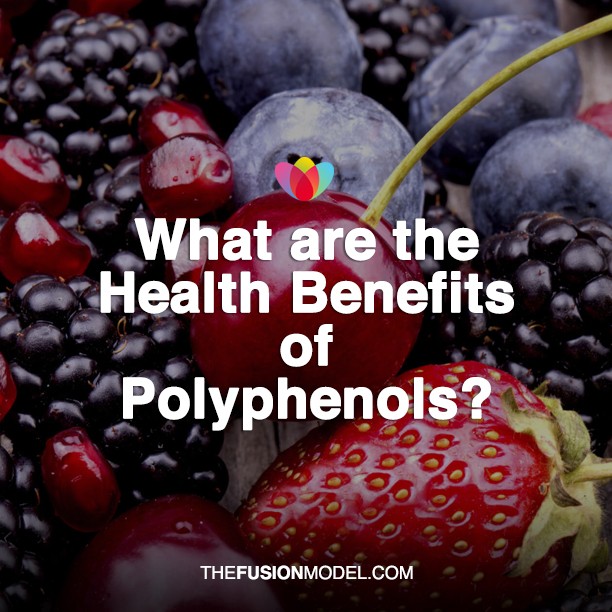Whether you know them or not, polyphenols form an essential part of your daily diet. They can be found in most of your regular food or beverage; mostly fruits and vegetables. They are packaged in those little cartons of juices, energy drinks, wines, iced tea, dark chocolates, and even ointments at times. However, experts insist the best way to obtain these chemical molecules with miraculous health benefits is to opt for a varied plant-based diet.
What are Polyphenols?
Polyphenols, or polyhydroxyphenols, are a structural class of organic phytonutrients. They are characterized based on the presence of many phenol structures associated to the molecule. The exact number and arrangement of these phenol structures decide the chemical behavior and properties of the polyphenolic member. Based on a broader division, the phenolic compounds may be segmented into four major classes—flavonoids, stilbenes, lignans, and phenolic acids.
Flavonoids
Flavonoids, or bioflavonoids, are the natural metabolites that deliver parts of the plant their characteristic color and taste. Their chemical structure consists of 15 carbon atoms linked to two phenyl rings and one heterocyclic ring. They are broadly sub grouped into anthoxanthins, flavanones, flavononols, flavans, and anthocyanidins.
Flavonoids are the most abundant class of polyphenolic compounds found in nature. Natural sources of the flavonoids include berries, cocoa, citrus fruits, Ginkgo biloba, onions, parsley, red wine, sea-buckthorns, and tea. They are observed to have both anti-inflammatory and antioxidant properties.
Stilbenes
There are essentially two types of chemically occurring stilbenes, namely (E)-stilbene and (Z)-stilbene. Resveratrol is the most significant natural phenol that exhibits properties with remarkable health benefits. Rather than human function, their basic function is to protect the plants and its vegetative parts from fungal or bacterial infection and help them recover from injuries.
Grape skin and red wine are known to be rich sources of resveratrol. Regular intake ensures the bodily fluids to inculcate neuroprotective habits.
Lignans
The polyphenolic class of lignans need to be derived from the plants through dimerization process. Their organic structure includes at least one propyl benzene skeleton. Their presence in plants usually go together with dietary fibers.
Flax and sesame seeds are known to be the best of natural sources for obtaining lignans. Listed among the other sources of lignans are cereals, soybeans, cruciferous vegetables, and some fruit, particularly apricots and strawberries
Phenolic acids
These set of secondary plant metabolites are widely found in plant sources across the biological kingdom. Phenolic acids are crucial to the overall growth and development of plants, as they respond to pathogen invasion with the production of these antioxidants. When ingested by humans, polyphenols act as protective agents against diseases that occur due to oxidative damage.
The two major types, hydroxybenzoic and hydroxycinnamic acids, are sourced from natural tea and cinnamon. However, the latter is also found copiously in coffee, blueberries, kiwis, plums, apples, and cherries. The phenolic acids: caffeic and ferulic type are found in profuse quantities across naturally occurring foods.
Health Benefits of Polyphenols
For starters, there is no study or research that establishes a fixed course of action of the polyphenols and their direct benefit to human health. At the same time, there are numerous study groups that investigate the grounds to prove their supposed benefits to mental and physical wellbeing.
Despite all the studies conducted and observations made in respect to the health improvements, the functional group of elements await their validation from authorities. Regulatory authorities, such as U.S. FDA, are not fully behind these phytonutrients, pertinent research reports have another story to tell. The regular metabolism of polyphenols in humans is said to fight against cancerous cells through the inhibition of angiogenesis. Their anti-inflammatory properties work from within to relieve pain, swelling, and cellular inflammation. The metabolites help to maintain normal sugar levels in the blood and reduces blood pressure.
Skin Benefits
The skincare products which use polyphenolic compounds as key ingredients insist that they protect the skin against the harmful effects of UV radiation. The polyphenol-enriched tea and coffee products vouch for a longer and healthier life claiming their fighting action against free radicals, helping reduce the visible signs of aging.
Brain Health
In addition, polyphenols are advised for all age groups for a healthy brain and good memory. Patients with symptoms of dementia are recommended to increase their intake of polyphenolic compounds through dietary changes. Plenty of recent work has shown their psychological benefits, that include mood improvement and enhanced neuromodulation. The anti-oxidant properties also work well to reduce oxidative stress on mind. Go grab your share of the goodness now!




